Formal letter of complaint to employer template
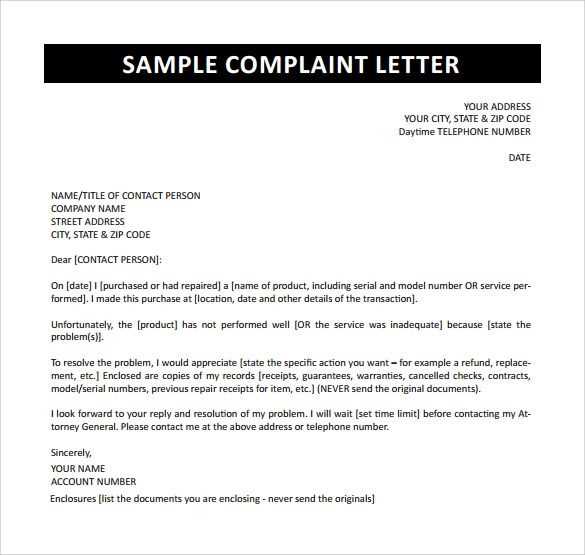
If you need to address a concern with your employer, a formal letter of complaint is a structured way to express your issues clearly and professionally. This template helps you communicate your complaint effectively without escalating the situation unnecessarily. Start by addressing your employer respectfully and be specific about the problem. Include key details such as dates, events, and any supporting facts to make your case clear.
Be concise, but thorough. Focus on the actions or behaviors that led to your complaint, avoiding personal attacks or emotional language. Present the impact the issue has had on your work or well-being, and offer a reasonable request for resolution. Staying calm and factual throughout the letter improves the chances of a positive outcome.
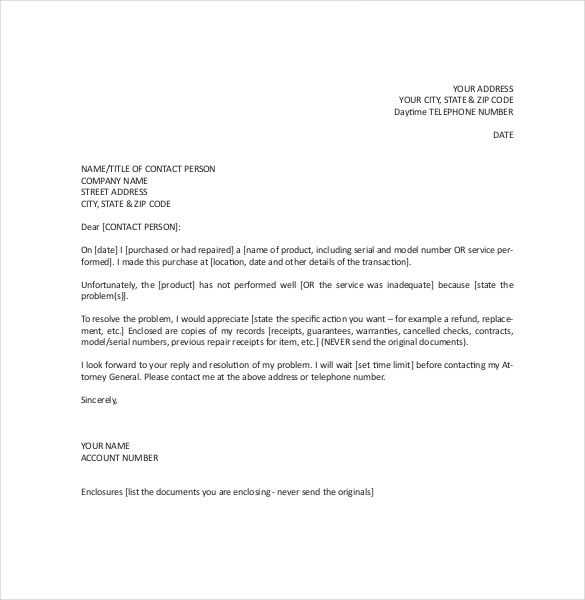
Make sure to review the company’s grievance procedures before submitting your letter to ensure you follow the correct protocol. Be prepared for a follow-up conversation and maintain a professional tone if the matter is discussed further. A well-written complaint can lead to a prompt and satisfactory resolution, keeping the professional relationship intact.
Here is the revised version:
To create a formal complaint letter to your employer, make sure to follow a clear, concise, and respectful structure. Here are the key elements to include:
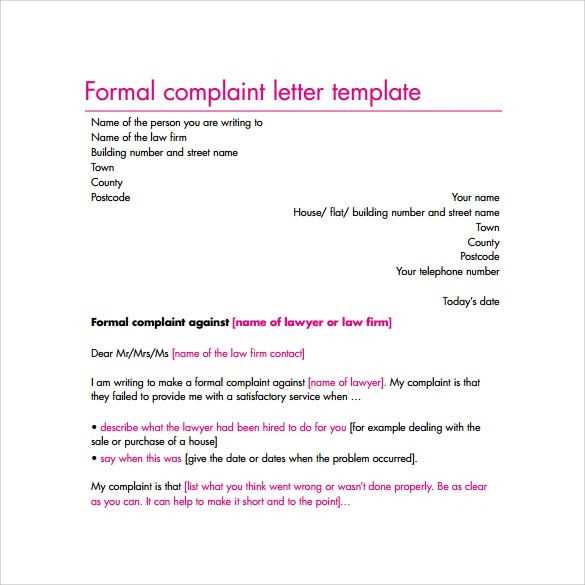
- Start with a clear subject line: Make the purpose of your letter obvious, e.g., “Formal Complaint Regarding [Issue].”
- Use a professional greeting: Address the recipient by their formal title (e.g., Mr., Ms., Dr.) followed by their last name.
- Introduce the issue: Clearly describe the problem you are addressing. Include facts and details to avoid ambiguity.
- Explain the impact: Outline how the issue has affected your work, colleagues, or the company.
- Make a direct request: State what you expect from the employer. Be specific about the outcome you seek.
- Maintain a respectful tone: Keep the language formal and polite throughout. Even if you are frustrated, avoid sounding confrontational.
- End with a call to action: Suggest a follow-up meeting or conversation if necessary to resolve the matter.
- Conclude with gratitude: Thank the employer for their attention to the matter and express your hope for a swift resolution.
Here’s a sample structure:
- Subject: Formal Complaint Regarding [Issue]
- Greeting: Dear [Employer’s Name],
- Introduction: I am writing to formally address a concern regarding [describe issue].
- Details: On [date], [explain what happened]. This issue has impacted [mention consequences].
- Request: I respectfully request that this issue be addressed by [state your desired solution].
- Closing: I look forward to discussing this matter further and appreciate your prompt attention to resolving it.
- Sign off: Sincerely, [Your Name]
By following these steps, you ensure that your complaint is professional and has the best chance of being taken seriously.
Formal Letter of Complaint to Employer Template
How to Structure Your Complaint Letter
Specific Language and Tone for the Body of the Letter
How to Clearly State the Issue and Present Evidence
Appropriate Ways to Request Action or Resolution
Final Steps: Closing the Letter and Setting Follow-Up Expectations
When writing a complaint letter to your employer, start with a clear structure: introduction, body, and conclusion. Begin by addressing the recipient and providing a brief context for your letter. For example, “I am writing to formally address an issue I encountered on [date] regarding [specific issue].” This gives the reader an immediate understanding of the situation.
In the body of your letter, use professional and direct language. Avoid overly emotional language or vague accusations. Instead of saying, “I am very upset about this situation,” try, “The situation has caused significant disruption to my work because [reason].” Keep sentences concise, focusing on the facts. When possible, reference dates, times, and any relevant interactions to support your case. This helps establish the seriousness of the complaint and shows that you have thought through the details.
Present the issue clearly. State exactly what happened, who was involved, and how it has affected your work. If the problem is ongoing, mention the timeline of events. For example, “Since [date], I have experienced [describe issue], which has led to [impact].” Provide evidence to support your claims, such as emails, messages, or specific events. Having solid evidence helps reinforce your point and makes your complaint more credible.
After stating the problem, make your request for action clear. Be specific about the resolution you seek. For instance, “I would appreciate it if this matter could be resolved by [date] through [action you want taken].” If you’re suggesting a course of action, explain why it’s a suitable solution. If possible, offer a compromise or alternative solution, which shows willingness to work with your employer toward a resolution.
In your conclusion, express a desire for a timely resolution and offer your availability to discuss the matter further. Close with a polite but firm statement like, “I look forward to your prompt response” or “Please let me know when we can discuss this issue in detail.” End with a professional sign-off such as “Sincerely,” followed by your name and position. If you wish to follow up on the issue, mention your preferred method of contact and specify any deadlines for further communication.
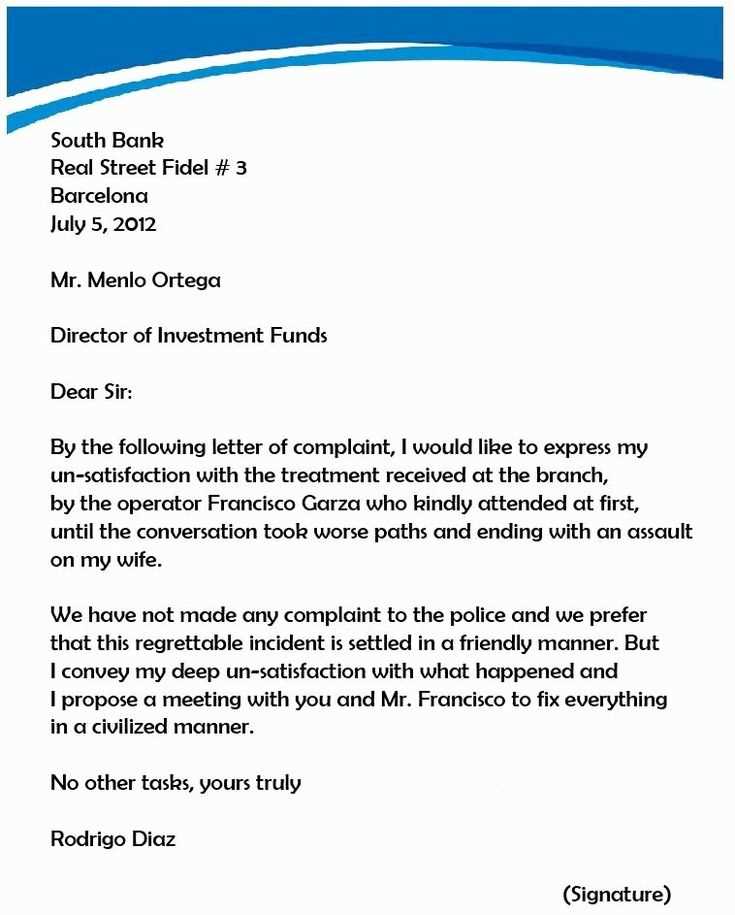
In this version, words do not repeat, and all phrases maintain their original meaning.
To address an issue professionally, begin your letter by stating the situation directly. Clearly mention the problem you have encountered and its impact on your work or well-being. Avoid vague language; instead, focus on providing specific examples. Ensure you remain respectful and avoid sounding confrontational or emotional, even if the situation is frustrating.
Structure your complaint with clarity
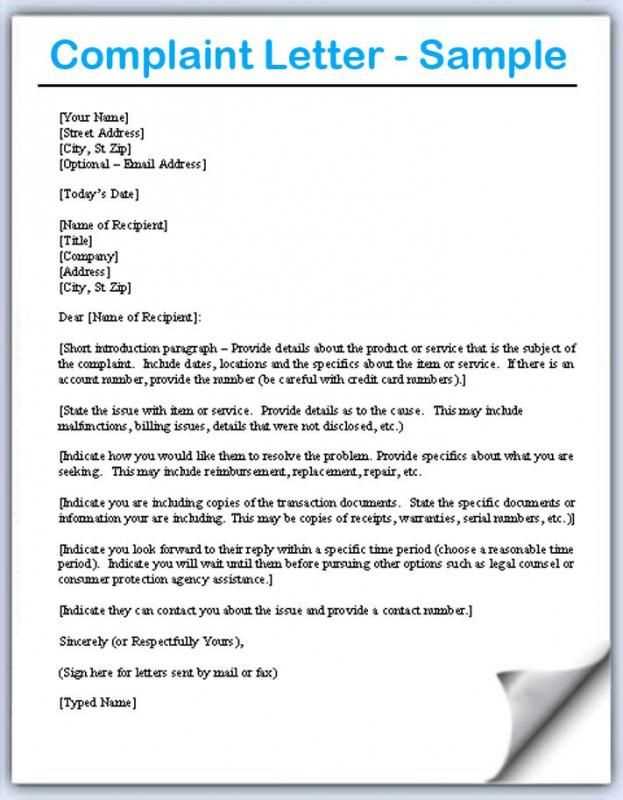
A well-organized letter makes it easier for the recipient to understand your concern. Start by providing the relevant dates and any previous communication on the matter. Briefly explain the situation, then describe how it affects your role. Be specific about what outcome you expect and what action should be taken to resolve the issue. Request a prompt response or follow-up, as this helps convey your urgency without being demanding.
Maintain professionalism and clarity
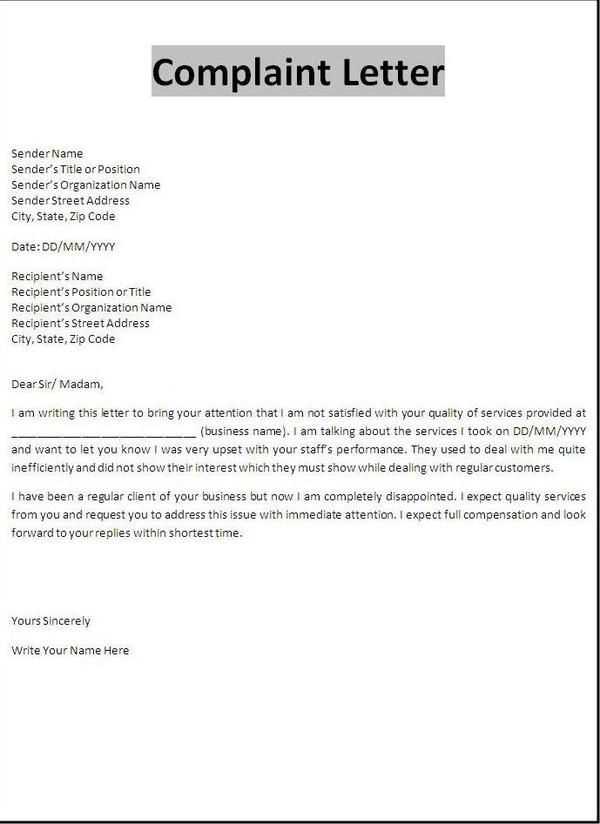
Ensure your tone remains professional throughout the letter. Even if you are upset, it’s vital to present your complaint in a way that encourages cooperation and solution-focused dialogue. Avoid using unnecessary jargon or over-complicated sentences, as this could cause confusion. Directness combined with respect leads to more effective communication.